Selecting the right webbing material for load-bearing applications requires understanding its stretch properties. Understanding how different webbing materials perform under various load conditions is essential for engineering safe and effective solutions for diverse industries.
For maximum durability, Kevlar and ballistic nylon are unparalleled in high-stress environments, while heavy-duty nylon and polyester offer reliable performance for everyday use. Polypropylene suits budget-conscious, light-duty applications, and leather remains a timeless choice for luxury aesthetics. Material selection should prioritize intended use, environmental conditions, and maintenance commitment to optimize lifespan and functionality.
Explore material characteristics, performance metrics, and applications to choose the best webbing solution for your project’s unique needs.
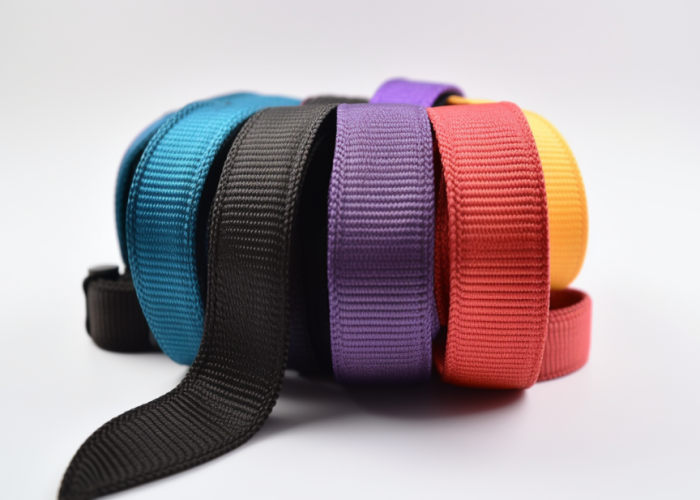

Webbing manufacturing expert with 15+ years of experience helping product developers build high-performance straps for industrial, medical, and outdoor use.
Kevlar is the strongest bag strap material due to its aramid fiber construction with rigid polymer chains that create exceptional tensile strength and cut resistance. This molecular structure outperforms regular nylon and polyester in all strength tests.
The selection of bag strap material is critical to ensuring longevity, functionality, and user comfort. The choice can mean the difference between a bag that reliably supports industrial applications and one that fails during critical moments.
Kevlar‘s exceptional performance comes from its unique molecular structure. As an aramid fiber, it features long, rigid polymer chains with high molecular orientation, creating an incredibly strong material that resists cutting, tearing, and abrasion better than any conventional webbing material. Testing shows Kevlar maintains its strength across extreme temperature ranges, from -40°F to 400°F, making it suitable for diverse environmental conditions.
Laboratory data demonstrates Kevlar’s superior water resistance. Unlike nylon, which can lose up to 25% of its strength when wet, Kevlar retains nearly all its original strength properties even when saturated. This characteristic makes it invaluable for marine applications or equipment exposed to moisture.
The material’s heat resistance is particularly noteworthy. While standard nylon begins to degrade at temperatures above 300°F, Kevlar maintains structural integrity up to 800°F. This thermal stability makes it essential for applications involving potential heat exposure, such as industrial equipment straps or safety harnesses used in high-temperature environments.
When considering cost factors, Kevlar commands a premium price of $3.00-$15.00 per yard compared to regular nylon’s $0.40-$2.00. However, its exceptional lifespan of 15+ years versus nylon’s 10-15 years often justifies the initial investment for critical applications where failure isn’t an option.
Ballistic nylon excels in heavy-duty applications through its high-density construction and basket weave pattern that resist abrasion, tears, and environmental damage. This specialized weave makes it ideal for industrial and military uses.
The unique properties of ballistic nylon stem from its specialized construction, featuring a denier density of 1050D and distinctive 3x transmission weave pattern. This material is heavier than standard ballistic nylon, providing enhanced protection against wear and environmental factors. Originally designed for World War II air jackets, its durability has made it the standard for modern military equipment bags.
In practical applications, ballistic nylon demonstrates remarkable abrasion resistance, enduring repeated friction against rough surfaces without significant degradation. This weave pattern creates a dense, tight fabric structure that resists penetration and prevents tears from spreading. The material withstands constant scraping, rubbing, and impact forces that would quickly degrade standard nylon.
The material’s environmental resistance profile includes protection against UV radiation, mildew, and chemical exposure. In humid environments where standard nylon might develop mold or mildew issues, ballistic nylon maintains its structural integrity. Similarly, its UV resistance prevents the brittleness and degradation that often affects other synthetic materials after prolonged sun exposure.
Heat and flame resistance capabilities further distinguish ballistic nylon from conventional materials. The dense weave and higher denier rating contribute to improved thermal resistance, allowing it to maintain performance in moderately high-temperature applications where standard nylon would fail. This makes it suitable for industrial equipment exposed to heat sources.
For heavy-duty commercial applications, ballistic nylon offers an optimal balance of durability and cost at $1.50-$4.00 per yard. While more expensive than standard nylon, it provides significantly enhanced performance characteristics that justify the investment for demanding industrial uses.
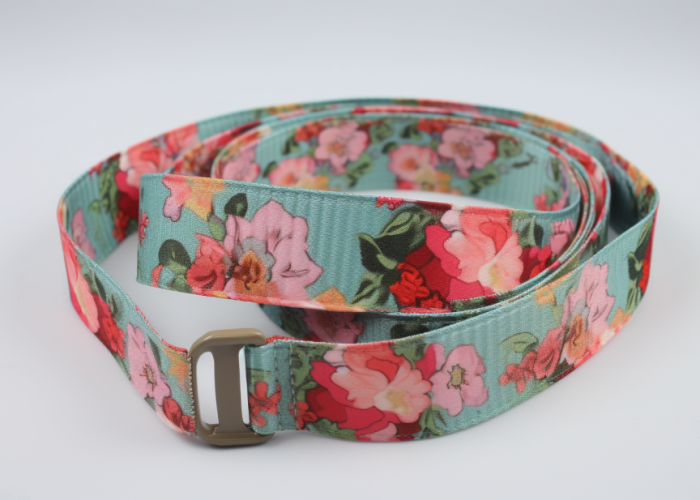
Choose nylon webbing when you need controlled stretch with high strength for shock-absorbing applications like climbing gear, recovery straps, or lifting slings. Its affordability makes it perfect for budget-conscious projects.
Nylon webbing offers specific performance characteristics that make it ideal for many applications. With 15-20% elongation under load and breaking strains ranging from 2500-5500 lbs, it provides controlled stretch properties that absorb shock loads while maintaining safety margins. This combination of strength and elasticity is critical for dynamic load applications.
The cost-effectiveness of nylon webbing at $0.40-$2.00 per yard makes it an attractive option for many commercial applications. Its versatility allows manufacturers to produce various widths and thicknesses tailored to specific requirements, from lightweight everyday bags to heavy-duty industrial equipment.
Manufacturing processes for nylon webbing allow for extensive customization. Width options typically range from 1/2 inch to 4 inches, with thickness variations available to meet specific strength requirements. This flexibility in production enables engineers to specify exactly the right webbing for their application without paying for unnecessary overengineering.
The material’s natural elasticity helps absorb shock loads, protecting both the cargo and the attachment points from sudden stress. This characteristic makes nylon webbing particularly valuable for applications like vehicle recovery straps, where controlled stretch prevents damage to both the tow vehicle and the recovered vehicle during extraction.
Environmental considerations for nylon webbing include moderate UV resistance and water absorption properties. While nylon does absorb water and can lose some strength when wet, proper treatments and coatings can mitigate these effects. For outdoor applications requiring maximum weather resistance, coated or treated nylon webbing options are available.
Polyester outperforms nylon outdoors due to superior UV resistance, minimal water absorption, and consistent strength when wet. Nylon weakens when saturated, making polyester better for prolonged exposure.
The molecular structure of polyester provides inherent resistance to UV degradation. Unlike nylon, which can become brittle and discolored after extended sun exposure, polyester retains its flexibility and color stability for years. Testing shows polyester maintains 95% of its original strength after two years of direct sunlight exposure, while nylon typically loses 20-30% under similar conditions.
Water resistance represents another key advantage of polyester. While nylon typically loses 10-15% of its strength when saturated, polyester maintains nearly its full tensile capacity regardless of moisture conditions. This characteristic makes polyester ideal for marine applications, hiking gear, and outdoor equipment exposed to rain or humidity.
Dimensional stability under varying conditions further distinguishes polyester. It experiences minimal shrinkage or stretching when exposed to moisture and temperature changes, maintaining consistent performance across different environments. This stability ensures reliable function in applications requiring precise tolerances.
The material’s resistance to chemicals and mildew adds to its outdoor suitability. Polyester resists degradation from common outdoor chemicals like saltwater, chlorine, and mild acids better than nylon. This resistance extends equipment life in harsh environments and reduces maintenance requirements.
For outdoor applications, polyester’s combination of UV stability, water resistance, and chemical resistance typically justifies its slightly higher cost compared to basic nylon webbing. The extended lifespan and reduced maintenance needs often result in lower total cost of ownership for outdoor equipment.
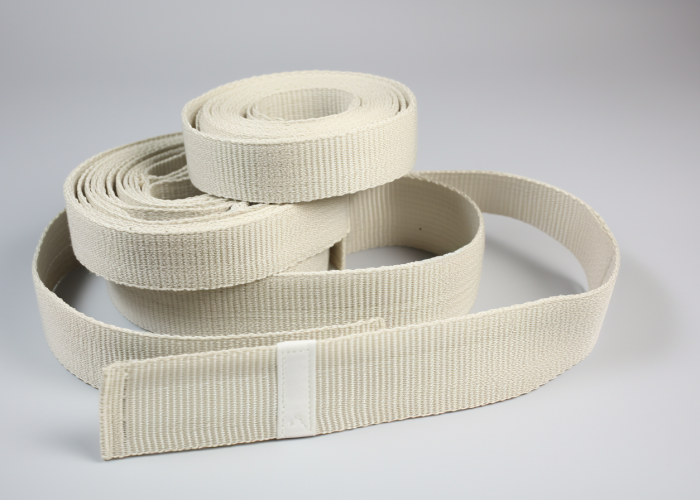
Environmental factors affecting strap material selection include UV exposure, moisture conditions, temperature extremes, chemical contact, and abrasion sources. Each material responds differently to these factors, requiring careful matching to the intended use environment.
UV exposure represents a primary concern for outdoor applications. Polypropylene degrades rapidly in direct sunlight, becoming brittle within months. Nylon experiences moderate UV degradation, losing strength and becoming discolored over time. Polyester offers superior UV resistance, maintaining integrity for years in direct sunlight. Kevlar provides the highest UV stability among synthetic materials.
Moisture conditions significantly impact material performance. Nylon absorbs water, losing 10-15% of its strength when saturated and experiencing dimensional changes. Polyester and polypropylene resist water absorption, maintaining consistent strength in wet conditions. Kevlar exhibits minimal water absorption, retaining nearly full strength even when submerged.
Temperature extremes affect different materials uniquely. Nylon maintains flexibility from -40°F to 180°F but begins degrading above 300°F. Polyester performs well from -40°F to 200°F with better heat resistance than nylon. Kevlar excels in extreme temperatures, functioning from -200°F to 800°F without significant property changes.
Chemical exposure requirements vary by application. Polypropylene offers excellent resistance to acids, bases, and solvents but degrades in UV light. Polyester resists most common chemicals including saltwater and chlorine. Nylon shows good general chemical resistance but can be affected by strong acids. Kevlar provides superior chemical resistance across a wide range of substances.
Abrasion sources in the operating environment determine material durability needs. Standard nylon offers good abrasion resistance for general use. Ballistic nylon provides enhanced protection against repeated friction. Kevlar delivers the highest abrasion resistance, withstanding extreme wear conditions that would quickly degrade other materials.
Material UV Resistance Water Resistance Temperature Range Chemical Resistance Abrasion Resistance
Kevlar Excellent Excellent -200°F to 800°F Excellent Excellent
Nylon Moderate Poor (loses 10-15% strength when wet) -40°F to 300°F Good Good
Polyester High Excellent -40°F to 200°F Good Good
Polypropylene Poor Excellent -20°F to 180°F Excellent Fair
Cost-benefit considerations for strap materials involve initial price, expected lifespan, maintenance requirements, and application-specific performance needs. The optimal choice balances upfront costs against long-term value and performance requirements.
Material costs vary significantly across options. Polypropylene offers the lowest initial cost at $0.15-$0.60 per yard, making it suitable for disposable or light-duty applications. Nylon webbing ranges from $0.40-$2.00 per yard, providing a balance of performance and affordability. Ballistic nylon costs $1.50-$4.00 per yard, justified by enhanced durability. Kevlar commands premium pricing at $3.00-$15.00 per yard for critical applications.
Expected lifespan directly impacts cost-effectiveness. Polypropylene typically lasts 1-3 years in outdoor use. Standard nylon webbing provides 10-15 years of service life. Polyester offers 10-15 years with better UV resistance. Kevlar delivers 15+ years of performance, often outlasting the equipment it supports.
Maintenance requirements affect total ownership costs. Polypropylene requires minimal maintenance but needs frequent replacement. Nylon may need periodic cleaning and inspection for UV damage. Polyester requires less maintenance due to superior environmental resistance. Kevlar needs minimal maintenance despite its higher initial cost.
Application-specific performance requirements justify material selection. For temporary or budget applications, polypropylene suffices. General-purpose uses benefit from nylon’s versatility. Outdoor equipment demands polyester’s weather resistance. Critical safety applications require Kevlar’s superior strength and reliability.
The cost per year of service often favors higher-grade materials for long-term applications. While Kevlar costs significantly more initially, its extended lifespan and minimal maintenance can result in lower annual costs compared to frequently replaced lower-grade materials in demanding applications.
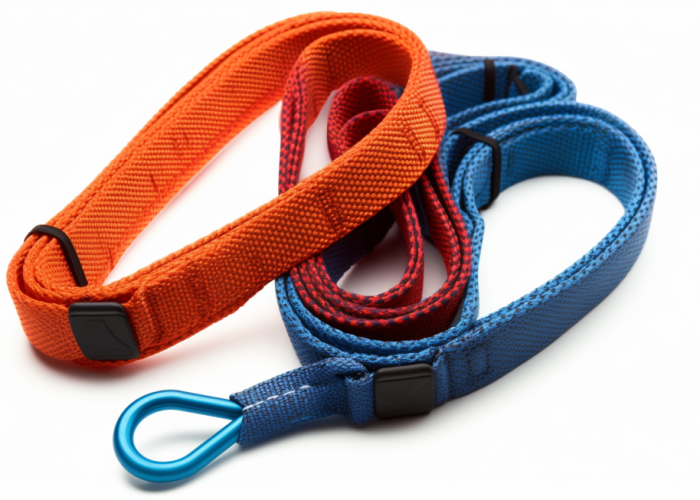
Ergonomics influence material selection through considerations of weight distribution, skin contact comfort, flexibility requirements, and long-term wear patterns. The right material choice enhances user comfort while maintaining necessary strength properties.
Weight distribution characteristics vary significantly between materials. Wider straps distribute weight more effectively, reducing pressure points. Nylon and polyester offer excellent weight distribution when properly sized. Leather molds to body contours over time, improving comfort. Polypropylene’s rigidity can create pressure points without proper padding.
Skin contact considerations affect material choice for straps worn directly against the body. Leather provides natural breathability and comfort against skin. Synthetic materials may require padding or special coatings to prevent irritation. Moisture-wicking properties become important for straps worn during physical activity or in hot climates.
Flexibility requirements depend on application needs. Nylon offers excellent flexibility, conforming to body movements. Polyester maintains shape better under load, providing more structured support. Kevlar’s rigidity requires careful design consideration for user comfort. Leather becomes more flexible with use, adapting to individual wear patterns.
Long-term wear patterns influence material durability and comfort. Nylon may stretch over time, requiring adjustment mechanisms. Polyester maintains consistent dimensions, ensuring long-term fit. Leather develops a personalized wear pattern, often improving comfort. Synthetic materials may require replacement as they lose flexibility or develop wear points.
Ergonomic design often combines materials to optimize performance. Padded sections use foam or gel inserts with durable outer materials. Load-bearing portions utilize high-strength synthetics while contact areas incorporate softer materials. This hybrid approach maximizes both comfort and functionality for demanding applications.
Sustainable bag strap options include recycled nylon from plastic bottles and fishing nets, organic cotton webbing, and bio-based polymers. These materials reduce environmental impact while maintaining performance standards.
Recycled nylon represents a leading sustainable option. Manufacturers now produce high-quality webbing from post-consumer plastic bottles and reclaimed fishing nets. This process reduces ocean waste while creating durable materials with performance characteristics comparable to virgin nylon. The recycling process typically uses 50% less energy than producing new nylon.
Organic cotton webbing offers a natural alternative for lighter applications. Grown without synthetic pesticides or fertilizers, organic cotton reduces agricultural chemical use. While not suitable for heavy-duty applications, it provides adequate strength for everyday bags and fashion accessories. The material biodegrades naturally at the end of life.
Bio-based polymers represent emerging sustainable technologies. These materials derive from renewable resources like cornstarch or sugarcane rather than petroleum. Current bio-based options offer moderate strength suitable for light to medium-duty applications. Ongoing research aims to improve performance characteristics to match traditional synthetics.
Recycled polyester from PET bottles provides another eco-friendly option. The recycling process consumes less energy than virgin polyester production while diverting plastic waste from landfills. Recycled polyester maintains the UV resistance and water-repellent properties of virgin material, making it suitable for outdoor applications.
Hemp webbing offers exceptional sustainability credentials. Hemp requires minimal water and no pesticides to grow, making it one of the most environmentally friendly fiber crops. Natural antimicrobial properties reduce odor and maintenance needs. While not as strong as synthetic options, hemp provides adequate performance for many applications while being completely biodegradable.
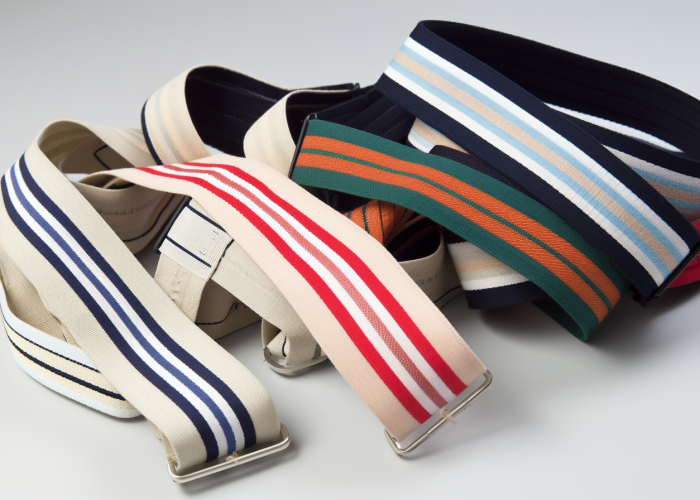
Selecting the right bag strap material requires balancing durability, cost, and application-specific needs. Whether you need Kevlar’s unmatched strength for critical applications, polyester’s weather resistance for outdoor gear, or nylon’s versatility for general use, understanding each material’s properties ensures optimal performance. As custom webbing manufacturers, we provide tailored solutions that match your exact specifications, helping you create products that excel in their intended environments while meeting your budget and sustainability goals.
Polyester provides superior UV resistance among common strap materials, maintaining 95% of its strength after two years of direct sunlight exposure. Kevlar offers even better UV stability for critical applications, while nylon and polypropylene degrade more quickly under prolonged sun exposure.
Polypropylene is the most cost-effective option at $0.15-$0.60 per yard, suitable for light-duty, budget applications. For general-purpose use requiring better durability, nylon webbing at $0.40-$2.00 per yard offers the best value, providing excellent strength and longevity at a moderate price point.
Nylon webbing significantly outlasts leather in most applications, offering 10-15 years of service life compared to leather’s 5-7 years. Nylon resists water damage, doesn’t crack or dry out, and maintains consistent strength throughout its lifespan, while leather requires regular conditioning and weakens when exposed to moisture.
Polypropylene is the lightest at 0.91 g/cm³, followed by nylon at 1.14 g/cm³, polyester at 1.38 g/cm³, and Kevlar at 1.44 g/cm³. Ballistic nylon weighs 30% more than standard nylon due to its denser weave, while leather varies significantly based on thickness and tanning process.
Each material has distinct temperature tolerances: nylon performs well from -40°F to 180°F, polyester handles -40°F to 200°F, while Kevlar excels from -200°F to 800°F. Polypropylene becomes brittle in cold conditions below 32°F, and all materials except Kevlar begin degrading above 300°F.
Nylon webbing provides the best balance of durability and comfort, offering high tensile strength (2500-5500 lbs) with natural flexibility and stretch properties that conform to body movements. Its 15-20% elongation under load absorbs shock while remaining comfortable for extended wear, making it ideal for everyday applications from backpacks to safety harnesses.